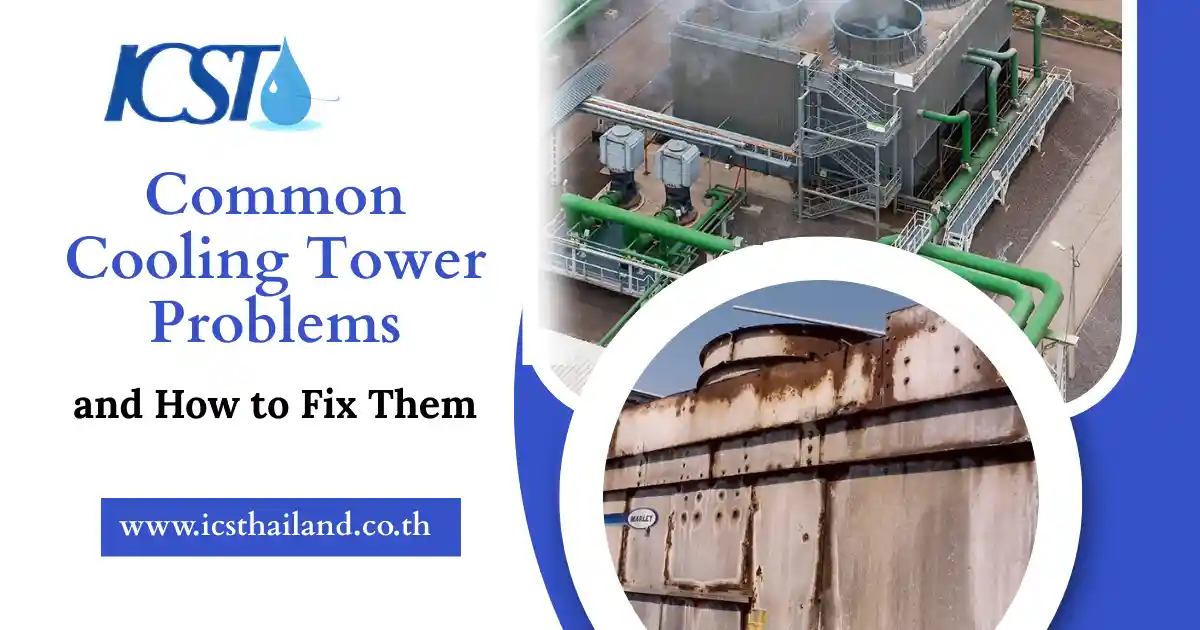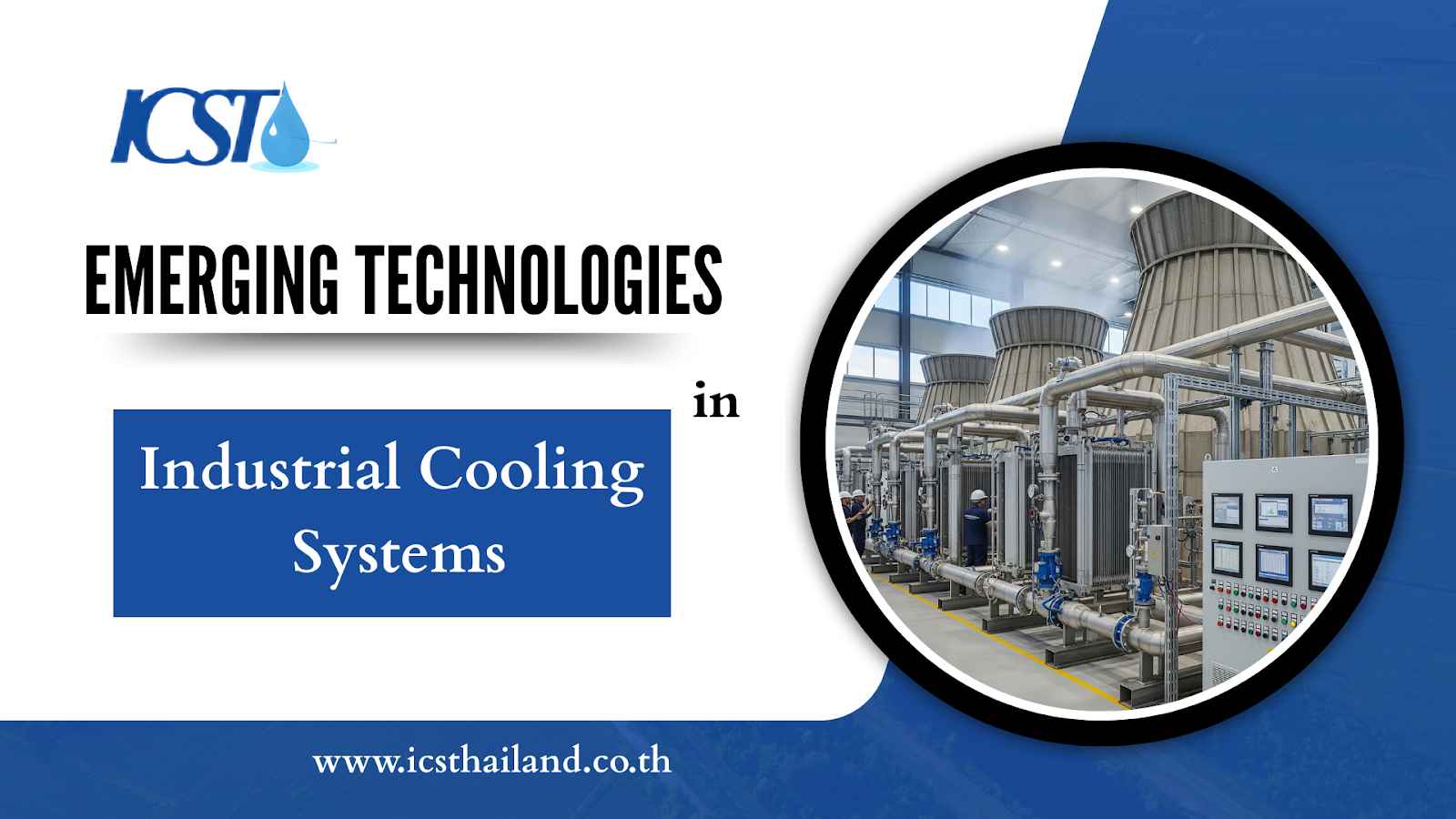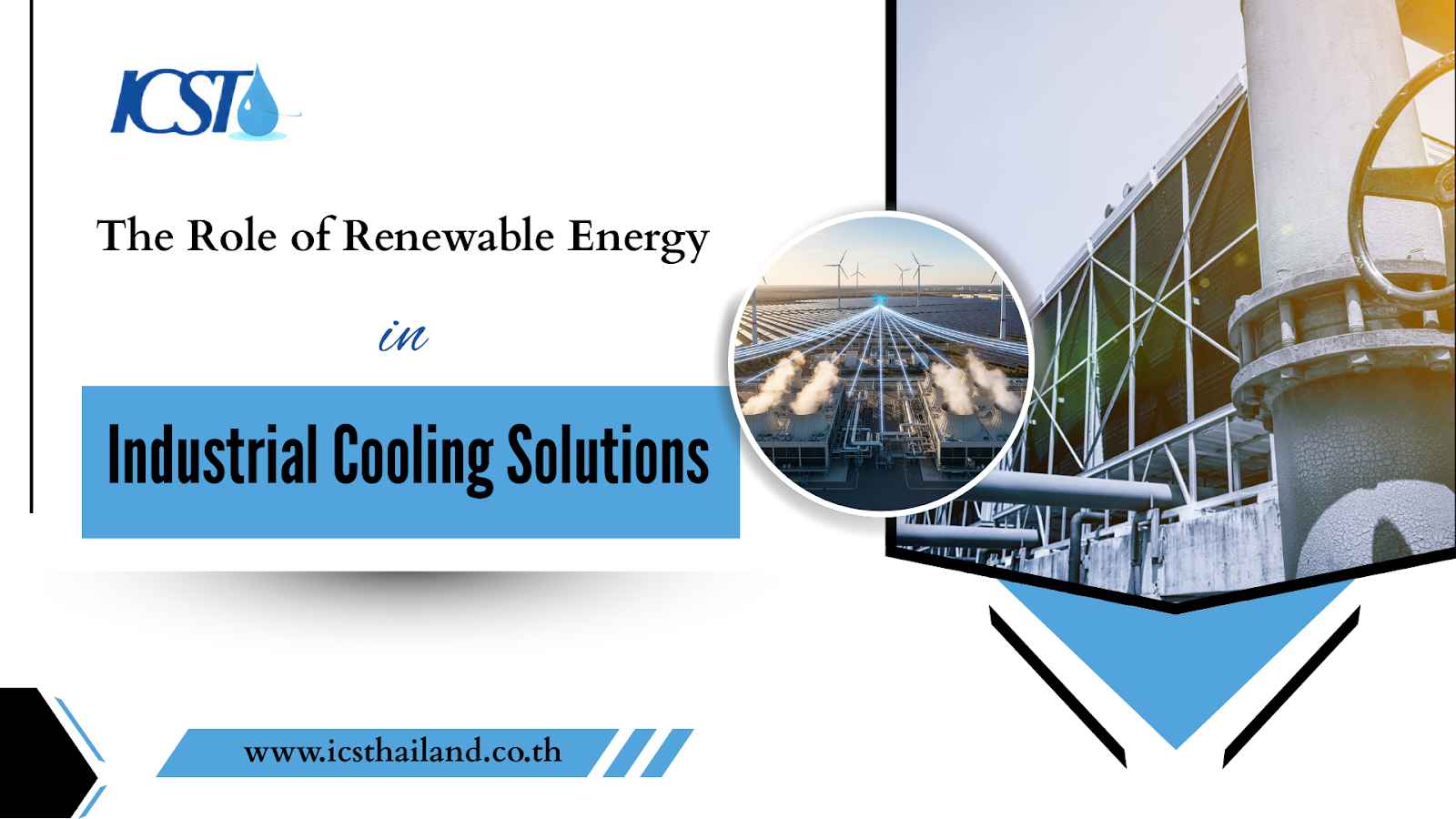Cooling towers are essential in power plants and industrial systems, removing excess heat from water to maintain optimal temperatures. But let’s be real—just like any hardworking machine, they’re not immune to issues. From efficiency dips to performance hiccups and wear-and-tear, cooling towers face challenges that can seriously affect their lifespan.
Want to know how to keep yours running smoothly? What is the purpose of cooling towers, and how do they work? This guide explores the most frequent cooling tower issues, their causes, and actionable solutions to help facility managers, engineers, and industry professionals maintain efficient and reliable operations.
Table of Contents
ToggleUnderstanding Common Cooling Tower Problems
Cooling tower systems are prone to various challenges, including biological growth, corrosion, scaling, and fouling. These issues can reduce heat transfer efficiency, increase energy costs, and lead to expensive repairs or downtime.
Common Cooling Tower Issues
- Biological Contamination: Growth of algae, mold, and even Legionella bacteria.
- Corrosion: Metal parts deteriorating due to improper water chemistry and oxygen exposure.
- Scaling: Deposition of minerals, primarily from hard water.
- Fouling: Dirt and debris buildup reducing efficiency.
- Water Loss: Excessive water evaporation or leaks leading to inefficiency.
- Noise Pollution: Excessive noise from fans and machinery disrupting nearby areas.
- Unbalanced Airflow: Uneven air distribution causing inefficiencies.
- Pump Failure: Malfunction of pumps affecting water circulation.
- Energy Inefficiency: Increased energy consumption due to poor maintenance or clogging.
Catching these issues early is key to keeping things running smoothly and avoiding costly repairs. Early detection not only saves you time and money but also prevents small problems from turning into major headaches down the line. Why wait for a breakdown when you can stay ahead of the game?
What’s Behind Cooling Tower Problems?
Take action today to ensure optimal performance and longevity! The following are some widespread causes:
- Improper Water Treatment: Can result in scale formation, corrosion, and biological growth.
- Environmental Factors: Warm climates or stagnant water encourage biological contamination.
- Equipment Wear and Tear: Aging components experience greater risks of leaks, vibrations, and failures.
- Excessive Noise and Vibration: May indicate misaligned fans, unbalanced motors, or loose components.
- Temperature Fluctuations: Suggest underlying inefficiencies in water or air circulation.
Top 10 Common Cooling Tower Problems and How to Fix Them
Having spent over 10 years in the cooling tower industry, I’ve seen it all when it comes to common problems and their solutions. In this guide, we’re going to dive into the ten most frequent cooling tower issues and, more importantly, how to fix them effectively.
Whether you’re dealing with performance inefficiencies, maintenance challenges, or unexpected breakdowns, we’ll cover the key problems and provide actionable solutions to keep your cooling tower running smoothly. Let’s get started!
1. Scaling and Mineral Deposits
Hard water and insufficient water treatment are the main culprits behind this issue. Hard water contains high levels of minerals like calcium and magnesium, which can lead to buildup and inefficiency in water systems if not properly treated.
Without adequate water treatment, these problems can escalate, impacting both the functionality of your appliances and the quality of your water.
Fix:
- Introduce chemical water treatments and anti-scalant additives to control scaling.
- Perform descaling procedures regularly.
2. Biological Contamination (Algae, Mold, Legionella)
Stagnant water combined with warm temperatures creates the perfect breeding ground for harmful bacteria and mosquitoes, leading to potential health hazards.
How to Fix:
- Apply biocide treatments to prevent biofilm formation.
- Use UV disinfection systems alongside regular cleaning schedules.
3. Corrosion of Metal Parts
Poor water chemistry and exposure to oxygen are common culprits behind this issue. When water quality is not properly managed, it can lead to imbalances that create unwanted problems, especially when combined with oxygen exposure. These conditions can trigger reactions that may affect the performance, durability, or overall efficiency of your system.
Fix:
- Protect your system by using corrosion inhibitors and keeping pH levels properly balanced to prevent damage.
- Upgrade vulnerable components by switching to corrosion-resistant materials like stainless steel or durable plastics for long-lasting performance.
4. Poor Airflow or Fan Failures
Dirty fans, motor issues, or bearing wear can often be the culprits behind mechanical problems or unusual noises in your equipment.
Over time, dust and debris build up in fans, reducing efficiency and causing overheating. Similarly, motor issues may develop if components are not properly maintained, leading to performance dips or even breakdowns.
Bearing wear is another common issue, occurring with prolonged use and creating friction that hampers smooth operation.
Fix:
- Clean fan blades regularly.
- Lubricate bearings to reduce friction.
- Replace faulty motors to restore airflow.
5. Clogged Nozzles or Water Distribution System
The problem often stems from a buildup of dirt, scale, and biological debris. These elements can accumulate over time, leading to inefficiencies and potential blockages. Keeping things clean and well-maintained is essential to avoid these issues.
Fix:
- Clean nozzles often to avoid clogs and keep performance sharp.
- Use top-notch filters to keep water pure and debris-free.
- Swap out old or worn nozzles to ensure consistent and efficient water distribution every time.
6. Drift Losses
Faulty or missing drift eliminators can lead to significant issues in your cooling system. Drift eliminators play a crucial role in minimizing water loss by capturing water droplets that would otherwise escape into the air.
When these components are damaged or absent, it not only increases water wastage but can also lead to environmental concerns and higher operational costs.
Fix:
- Upgrade your system with high-efficiency drift eliminators to significantly reduce water waste and improve performance.
- Schedule regular inspections to identify and address any signs of wear or damage early, ensuring long-term efficiency and reliability.
7. Water Leaks
Aging components, cracks in the basin, and loose fittings are common culprits behind this issue. Over time, wear and tear take a toll on parts, causing leaks or inefficiencies.
Cracks in the basin may allow water to seep through, while loose fittings can lead to instability or water leakage. If you’re experiencing these problems, it’s essential to address them promptly to prevent further damage.
Fix:
- Use sealants to patch minor cracks.
- Replace damaged structural components.
- Inspect for leaks during maintenance schedules.
8. Excessive Vibration and Noise
Unbalanced fans, misaligned equipment, or loose bolts are common culprits behind machinery issues. These problems can lead to vibrations, excessive noise, and even long-term damage if not addressed promptly.
Fix:
- Ensure all components are properly aligned and balanced for smooth operation.
- Install vibration dampeners to significantly reduce noise and improve overall performance.
9. High Energy Consumption
Fouled heat transfer surfaces and inefficient components can significantly impact the performance of your system. Over time, residue and debris can accumulate on heat transfer surfaces, reducing their ability to function effectively. Similarly, outdated or poorly maintained components can lead to inefficiencies that waste energy and increase operational costs.
Fix:
- Regularly clean your heat exchangers to ensure they operate at peak efficiency and save on energy costs.
- Consider upgrading to energy-efficient motors and variable speed drives to reduce energy consumption and improve overall performance.
10. Icing in Cold Weather
Poor water flow control during low ambient temperatures can lead to various issues, from inefficient system performance to potential equipment damage. When temperatures drop, water flow can become restricted or inconsistent, impacting the overall functionality of your system.
Fix:
- Install basin heaters or de-icing spray systems.
- Maintain proper water flow rates.
- Make seasonal adjustments to tower operations.
Importance of Preventive Maintenance
Regular maintenance is crucial for cooling towers to ensure efficiency, reliability, and prevent costly issues. Routine tasks like inspections, cleaning, and servicing help avoid scale buildup, corrosion, and microbial growth.
Check water quality, drift eliminators, fan motors, and pumps to maintain performance. Proactive care improves energy efficiency, extends lifespan, and ensures compliance with safety standards.
Inspections:
- Schedule routine maintenance to address minor issues before they lead to significant failures.
- Keep detailed records of inspections and repairs to track the performance and lifespan of each component.
- Ensure all maintenance is performed by qualified professionals using appropriate tools and equipment.
Monitoring:
- Track water quality (temperature, pH, and conductivity) to detect early signs of scaling, fouling, or corrosion.
- Monitor dissolved oxygen levels to prevent equipment damage and ensure optimal water conditions.
- Analyze turbidity to identify potential contamination or sediment build-up.
Proactive Solutions:
- Implement preventive maintenance schedules to not only minimize long-term repair costs and energy wastage but also to ensure your equipment operates at peak efficiency.
- Regular maintenance helps extend the lifespan of your assets, prevents unexpected breakdowns, and keeps operations running smoothly.
- By addressing potential issues before they escalate, you can save money, reduce downtime, and contribute to a more sustainable and efficient workplace.
Preventing Cooling Tower Failures
When a cooling tower stops working, it can lead to costly breakdowns, system failures, and significant downtime. Repairs and lost productivity quickly add up, creating a major headache for owners. To avoid these disruptions, it’s crucial to take proactive measures to keep your cooling tower system reliable and running smoothly.
- Use automated water treatment systems.
- Train staff to recognize early warning signs like noise, leaks, or temperature irregularities.
- Maintain a detailed maintenance log to track inspections, repairs, and upgrades.
- Invest in high-quality parts and accessories, like corrosion-resistant materials and advanced filtration systems.
- Ensure proper system calibration to maximize efficiency and longevity.
- Implement energy-saving practices to reduce operational costs while maintaining performance.
- Keep a stock of essential spare parts to minimize downtime during repairs.
The Role of Water Quality Monitoring
By proactively managing water quality, you can prevent costly repairs, enhance sustainability efforts, and ensure your cooling systems operate at peak performance year-round.
- Improved prevention of scaling, corrosion, and biological growth, ensuring optimal system performance.
- Reduced energy consumption and extended equipment lifespan, saving on operational costs in the long run.
- Early detection of potential issues, avoiding costly repairs and unplanned downtime.
- Enhanced system reliability, minimizing disruptions and maximizing productivity.
- Eco-friendly benefits through efficient resource use, supporting sustainability goals.
Conclusion
Keeping your cooling tower running efficiently comes down to smart maintenance, proper water management, and quick repairs. Neglecting these can lead to higher costs, safety risks, and reduced performance.
The key is to spot issues early, think scaling, corrosion, or biofouling—and tackle them before they escalate. With regular inspections, water quality checks, and proactive fixes, your cooling tower can operate at its best, saving your business time and money.
Looking to improve your cooling tower’s efficiency or need expert assistance with maintenance? Reach out to ICST, we’ll help keep your operations running smoothly and energy-efficient.
Frequently Asked Questions
How to control TDS in cooling tower?
To control TDS levels effectively in a cooling tower, conductivity controllers are used to continuously measure the water’s conductivity. When the conductivity reaches a preset threshold, the controller triggers a blowdown valve to discharge a portion of the water, helping maintain optimal water quality and prevent scale formation.
What is the disease in the cooling tower?
Legionnaires’ disease is a serious illness caused by Legionella bacteria, which can grow in poorly maintained cooling towers.
Why is my cooling tower not cooling enough?
If your cooling tower isn’t cooling effectively, several factors could be to blame:
- Clogged nozzles or heat exchanger surfaces
- Dirty or damaged fill media
- Fan malfunctions or poor airflow can impair heat rejection.
- Incorrect water chemistry can lead to scale buildup, insulating the system from efficient heat exchange.
Fixing the issue involves inspecting the mechanical parts, cleaning internal components, optimizing airflow, and recalibrating water treatment systems.
What is the main problem in the cooling tower?
Scaling due to mineral buildup is the most common problem, as it reduces heat transfer efficiency and increases energy consumption.
How often should a cooling tower be serviced?
Cooling towers should be inspected weekly and undergo full servicing, including cleaning and chemical treatment, at least every 3 to 6 months.








